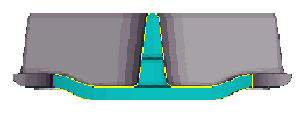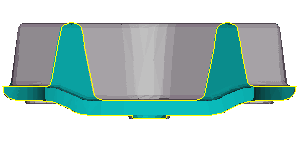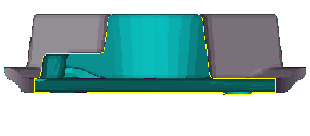|
Draft Angles,
Radii and Fillets
| Design
Criteria for Draft Angle, Radii, and Fillets The ice cleat design is
then reviewed to determine if --
- Vertical surfaces have the proper draft angle so the
mold can be drawn from the pattern. A draft angle of 1° is common.
- Sharp radii and fillets are smoothed and rounded to
avoid turbulent metal flow and to avoid hot tearing, poor fill, and stress concentrations.
Three cross sections of the ice cleat are shown below
illustrating the vertical draft angle and the radii and fillets on the original design. |
 |

Center Cut |

Forward Cut |

Long Cut |
Since the ice cleat was originally designed as a forging,
where mold release, metal flow,
and stress concentrations are also important design issues, the draft angles, radii,
and
fillets are more than sufficient for good castability.
6
|